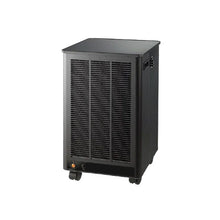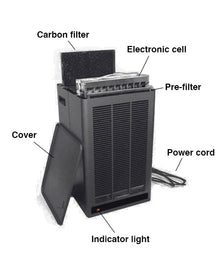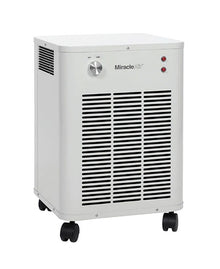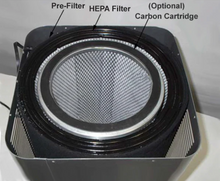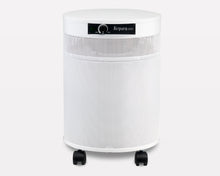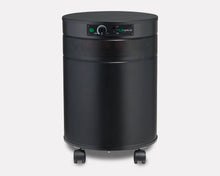Understanding HEPA, CADR & ACH: Key Specs for Allergy Air Purifiers in Kids' Rooms
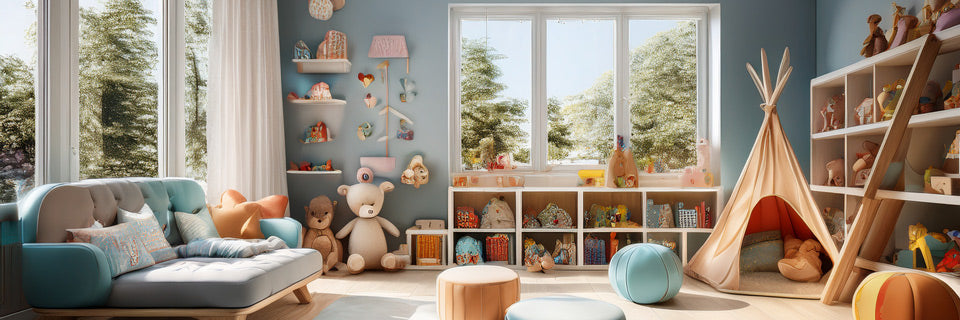
When your child struggles with allergies, every parent wants to create the safest, most comfortable environment possible. Air purifiers can be a game-changer for reducing allergens in your child's bedroom, but navigating the technical specifications can feel overwhelming. Let's break down the three most important metrics you need to understand: HEPA filtration, CADR ratings, and ACH measurements.
Why Air Purifiers Matter for Children's Allergies
Children spend significant time in their bedrooms, making air quality in these spaces particularly important. Research consistently shows that air purifiers can make a real difference. A pilot study found that intervention with air purifiers reduces indoor PM2.5 levels with significant improvements in nasal symptoms in children with allergic rhinitis. This gives parents confidence that investing in the right air purifier isn't just about peace of mind—it's about measurable health benefits.
The key is understanding which specifications actually matter when shopping for a HEPA filter for kids' allergies. Not all air purifiers are created equal, and the technical jargon can make it difficult to choose the best option for your child's specific needs.
HEPA Filtration: The Gold Standard for Allergy Relief
HEPA stands for High-Efficiency Particulate Air, and it represents the most effective filtration technology available for home use. A true HEPA filter must capture at least 99.97% of particles that are 0.3 microns or larger. To put this in perspective, most common allergens—including dust mites, pollen, pet dander, and mold spores—are significantly larger than 0.3 microns, making HEPA filtration incredibly effective.
When shopping for an air purifier for your child's room, look for "True HEPA" or "HEPA-rated" filters rather than "HEPA-type" or "HEPA-style" alternatives. These knock-offs may capture fewer particles and won't provide the same level of allergen removal your child needs.
The beauty of HEPA technology lies in its mechanical filtration process. Unlike ionic or ozone-generating purifiers, HEPA filters physically trap particles without producing potentially harmful byproducts. This makes them particularly suitable for children's rooms, where safety is paramount.
CADR: Understanding Clean Air Delivery Rate
CADR, or Clean Air Delivery Rate, measures how much clean air an purifier produces per minute. This rating is expressed in cubic feet per minute (CFM) and is tested for three specific particle types: smoke, pollen, and dust. Each represents different particle sizes that correspond to various allergens your child might encounter.
For a CADR for allergy room application, focus on the pollen and dust ratings, as these most closely match common childhood allergens. Higher CADR numbers indicate faster air cleaning, but the key is matching the CADR to your room size. A general rule of thumb is that your air purifier should have a CADR rating of at least two-thirds of your room's square footage.
For example, if your child's bedroom is 150 square feet, look for an air purifier with a minimum CADR of 100 CFM. This ensures the unit can effectively clean the air in the space without running constantly at maximum speed, which can be noisy and energy-intensive.
ACH: Air Changes Per Hour for Optimal Allergy Control
ACH, or Air Changes per Hour, indicates how many times an air purifier can filter the entire volume of air in a room within one hour. This metric directly relates to how quickly and thoroughly allergens are removed from your child's breathing space.
For effective ACH air changes allergy relief, aim for an air purifier that can achieve 4-6 air changes per hour in your child's bedroom. This means the entire volume of air in the room gets filtered four to six times every hour, providing consistent allergen removal throughout the day and night.
To calculate ACH, you need to know your room's volume (length × width × ceiling height) and the air purifier's CADR. The formula is: ACH = (CADR × 60) ÷ Room Volume. This calculation helps you determine whether a specific air purifier will provide adequate coverage for your space.
Choosing the Right Size and Placement
Room size directly impacts how effectively an air purifier can reduce allergens. An undersized unit will struggle to keep up with allergen loads, while an oversized unit may cycle air too quickly, not allowing sufficient time for particles to be captured.
Consider your child's bedroom layout when selecting an air purifier. Place the unit where it can draw air freely from multiple directions, typically 3-4 feet away from walls and furniture. Avoid placing it directly next to beds or play areas where it might create drafts or noise disturbances.
Many parents find that running air purifiers continuously on lower settings works better than intermittent high-speed operation. This approach maintains consistent air quality while minimizing noise that might disrupt sleep.
To calculate the exact size of the air purifier for your needs, you can use a simple calculator to make it easy.
Beyond the Specifications: Practical Considerations
While HEPA, CADR, and ACH ratings are crucial, don't overlook practical factors that affect daily use. Noise levels matter significantly in children's bedrooms, especially during sleep hours. Look for units with multiple speed settings and specifically check decibel ratings for nighttime operation.
Filter replacement costs and frequency represent ongoing expenses that can add up over time. Some high-quality HEPA filters last 6-12 months, while others need monthly replacement. Factor these costs into your decision-making process.
Energy efficiency also deserves consideration, particularly if you plan to run the air purifier continuously. Look for ENERGY STAR certified models that provide effective filtration without dramatically increasing your electricity bill.
Making the Investment Count
Investing in an air purifier with proper HEPA filtration, adequate CADR ratings, and sufficient ACH capability can significantly improve your child's allergy symptoms and overall comfort. The research supports this approach, showing measurable improvements in nasal symptoms and overall air quality when parents choose appropriately specified air purifiers.
Remember that air purifiers work best as part of a comprehensive allergy management strategy. Regular cleaning, dust mite-proof bedding, and maintaining optimal humidity levels all contribute to creating an allergen-reduced environment for your child.
The technical specifications might seem complex initially, but understanding HEPA, CADR, and ACH empowers you to make an informed decision that will benefit your child's health and comfort for years to come. When you see reduced sneezing, better sleep, and fewer allergy flare-ups, you'll know you made the right choice.
Key Takeaways for Parents
Start by measuring your child's bedroom to determine the appropriate CADR and ACH requirements. Prioritize true HEPA filtration over alternative technologies. Consider noise levels, filter replacement costs, and energy efficiency alongside technical specifications. Remember that the best air purifier is one that effectively cleans your child's air while fitting seamlessly into your family's daily routine.
With the right information and careful consideration of these key specifications, you can create a cleaner, healthier environment that helps your child breathe easier and sleep better.

